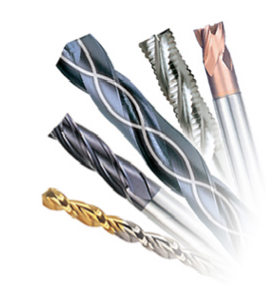Recent Posts
High Speed Steel vs Carbide
Posted by on
Just like High Speed Steel replaced Carbon Steel, Carbide is now being used more and more for end mills and drill bits. Even so, HSS blades and drill bits are used in certain important niches for metal cutting applications. There are many ways to make HSS cutting tools efficient and economical without sacrificing cutting speeds, maintaining short work cycles and reducing the cost of the tools themselves.


Common applications
Many professionals still prefer HSS cutting tools for various jobs in their machining operations. Especially where precise cuts are required, deep or very small holes, or even where threads are required:
- Reamers
- Taps
- End mills
HSS is strong enough to be used in high pressure and vibration operations in cutting tool applications. HSS also maintains its edges and can perform well even on older or low power machines.
An alternative to offset the cost of carbide
When we are concerned about the cost of cutting tool, HSS can be viable alternative to replace carbide. Taps and drill bits last long enough and are less expensive. Either way it will be important to weigh the cost of cutting speeds slower than those that can be achieved with carbide. In intermittent operations with susceptibility to breakage of the tools, the performance of HSS can counteract this difference with greater productivity. It is expensive to break carbide cutters and can cause production shutdowns, if we do not have replacements at hand.
Material and Design
With the advances in the design and materials used to make the HSS, its productivity has been increased. Typically it contains tungsten or molybdenum, chromium and some vanadium and carbon. The HSS can be made even harder by adding cobalt. Cobalt bits and cutters can cut difficult materials such as titanium or stainless steel alloys. With cobalt you can increase your cutting speeds by 50%.
Coatings and metallurgy
If we achieve greater hardness in HSS, the cutting tool can work at higher speeds and its performance will be higher. There are several coatings that help us increase surface hardness, reduce friction or prevent oxidation. The TiN (Titanium Nitride) coating produces a golden finish, which allows the edge to be maintained for a longer time avoiding oxidation. Many times a performance is achieved 2 times higher than the uncoated HSS with a cost of 25 to 50% higher than standard.
 Loading... Please wait...
Loading... Please wait...
